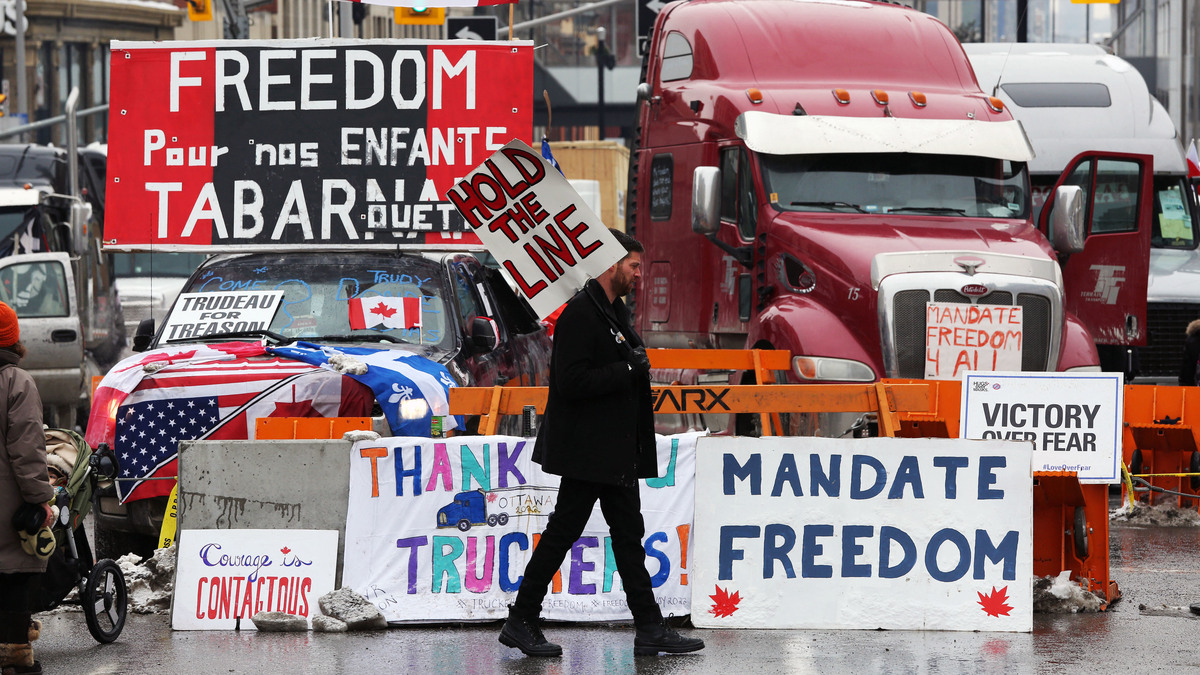
A protester in Ottowa, Canada walks in front of parked trucks at the demonstration against vaccine mandates. Dave Chan/Getty Images hide caption

A protester in Ottowa, Canada walks in front of parked trucks at the demonstration against vaccine mandates.
Dave Chan/Getty ImagesThree weeks ago, semi trucks flooded the streets of Canada's capital city. Drivers were protesting a vaccine mandate at the U.S. border. But since then, the demonstration in Ottawa has evolved to be about much more and is spreading to other cities throughout the world.
NPR correspondents Shannon Bond and Odette Youseff have been following this story and explain how the movement began and what has kept it going.
Email us at
This episode was produced by Mia Venkat and Ashish Valentine. It was edited by Lee Hale and Christopher Intagliata. Additional reporting from Emma Jacobs. Our executive producer is Cara Tallo.

 Live Radio
Live Radio